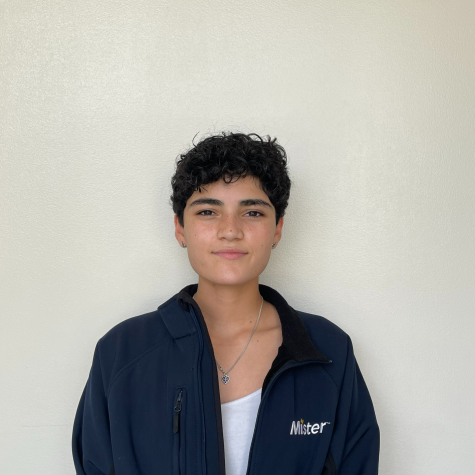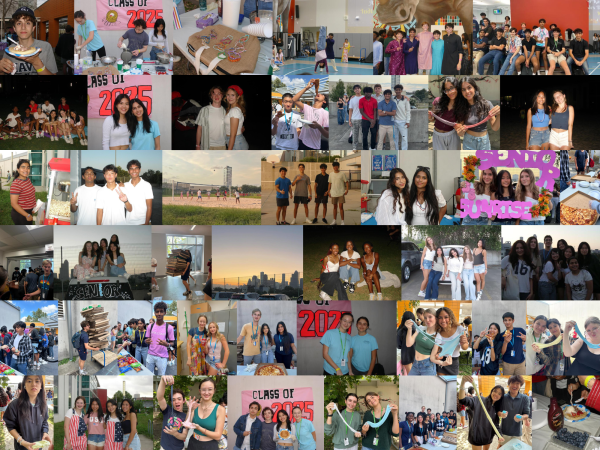Suffering through eating disorders in isolation
95 percent of people with eating disorders are between the ages of 12-15.
*For purposes of anonymity, the interviewee will be referred to as Alice per the interviewee’s request.
*This is only one person’s experience, experiences vary from person to person.
Eating disorders are life-threatening mental illnesses, which affect over 9 percent of people during their lifetime. Out of the total population affected, over 95 percent of cases are between the ages of 12-25, making teens the most susceptible age group. Furthermore, the pandemic left teens particularly vulnerable to the development and progression of eating disorders. For CVHS student Alice, the pandemic served as a catalyst for her eating disorder.
“When the pandemic hit, it felt as if for the first time I had control over myself, but that was unfortunately not in a positive form. Because I was so isolated and had nothing to do, I think all of my focus shifted onto my eating patterns,” said Alice.
Ever since the 5th grade, Alice has suffered from body dysmorphia which never allowed her to feel comfortable in her own clothing when out in public. She experienced social stress which slowly worsened once she entered middle school, where she began to judge her body on how much she weighed.
“That got me to a point where I couldn’t recognize what was in the mirror because the image of my body was based on what was on the scale that day,” said Alice.
However, it wasn’t until the pandemic that her eating disorder started to consume her everyday life. Like many other teens during the COVID-19 lockdown, Alice’s normal day-to-day routine was disrupted. Without school to focus on, her life began to revolve around food. One of the catalysts- a calorie counting app. Although calorie trackers can help individuals reach a specific goal, they can also trigger or worsen eating disorder symptoms. For Alice, it did the latter. The app became an obsession, making her aware of every bite she took.
“I was just basically going day-to-day eating as little as possible which left me at a standstill,” said Alice.
Mealtimes became especially difficult for Alice. Between the emotional stress that accompanied eating and the constant feeling of numbness, Alice began lashing out.
“I would get very angry and stressed when meals didn’t go exactly as I intended. I would lash out and cry when someone would eat something I was planning on having. When that would occur, I would get so frustrated that I wouldn’t replace it with something else to eat,” said Alice.
Tensions within the household began to rise. Although her father noticed the change in her eating behavior rather early on, her mother did not sense it until much later, which lead to strained relations between her and her mother.
“When I would start eating at the counter, just picking from the food, she would sort of say, like, ‘Hey Alice, don’t do that!’ I know she meant well, but that would really hurt me especially since I was really emotional about this subject. There were even a couple of times where my mom and dad would have to tell me ‘You should eat this, just eat this plate. It was really hard for me to get through that,” said Alice.
It wasn’t before long that she stopped getting her period. After about five months, she was finally taken to see a doctor which was crucial in her steps to recovery. Her doctor confirmed she had symptoms of an eating disorder.
“The doctor would ask me a bunch of questions which made me feel really pressured because they were asking me, like, ‘what do you eat breakfast, lunch, or dinner,’ but it really helped me realize that like, ‘Wow, this could really develop into something worse and have a longer-term effect on my body.’ That was really when I started wanting to turn things around and try to do better,” said Alice.
In her steps to recover, the first thing she did was delete the calorie counting app.
“It really helped when I deleted the app because although I still had a sort of focus on what I was eating, it was easier to get back on track. I just sort of allowed myself to snack but because I was still apprehensive of larger meals, but I allowed myself to eat when I wanted,” said Alice.
In order to prevent herself from reverting back to unhealthy thinking when eating, she found distracting herself with either movies or social media particularly useful. Although she still struggles to reach out, Alice is now doing much better.
“I’m still struggling a little to get that extra support. But regarding the disorder itself, I’m practically over it. Now all that is left is the emotional residue behind it, but overall, it is pretty much over,” said Alice.
For Alice, the external voice of the doctor was extremely important in helping her recognize the effects of her eating disorder and start her road to recovery. It allowed her to talk about her eating disorder without lashing out at the people she cared about.
“When you realize you’re just thinking about food when you’re doing something else or in your day-to-day life, try to like shift that attention to something else. Because if you only think about what you’re going to eat next or how many calories are in your next meal, it will just become harder. So, I would say try to find other activities you want to get involved in or something to distract you from because eventually, you will get to a point where you can just eat and have food separate from the rest of your life,” said Alice.
If you or a loved one is struggling with an eating disorder; you can call or text the toll-free, confidential NEDA Helpline, Monday-Thursday from 9:00 a.m.- 9:00 p.m. and Friday from 9:00 a.m. – 5:00 p.m. at 1-800-931-2237.
Your donation will support the student journalists of Carnegie Vanguard High School. Your contribution will allow us to cover our annual website hosting costs and fund field trips, competition fees, and equipment. We appreciate your support!

Hello! My name is Katherine. I'm a senior who is heavily invested in the rock genre and spends a little too much time playing around with photoshop.









Nour Chibani • Oct 22, 2021 at 9:32 pm
I appreciated how you kept the interviewee’s identity confidential but conveyed their experience so that others can relate and know that they are not alone in their struggle.
Ankitha Lavi • Oct 22, 2021 at 2:20 pm
Thank you so much for not just putting her story, but also for telling us how she recovered!
Esha Sharma • Oct 22, 2021 at 2:19 pm
This was a very sensitive topic to cover and I think y’all did an amazing job. You were able to keep it very informational while also recognizing the emotional and mental effects and E.D. can have on a person.
Jessica Lin • Oct 22, 2021 at 2:11 pm
Eating disorders are very stigmatized, so I’m glad y’all were able to highlight this topic in a respectful manner. It was very informational to learn about a student’s struggle with the disease and about eating disorders in general.
hannah mansour • Oct 22, 2021 at 2:11 pm
I really like how the writers used the hotline as the closing of the essay, as the story may be sensitive to some people.